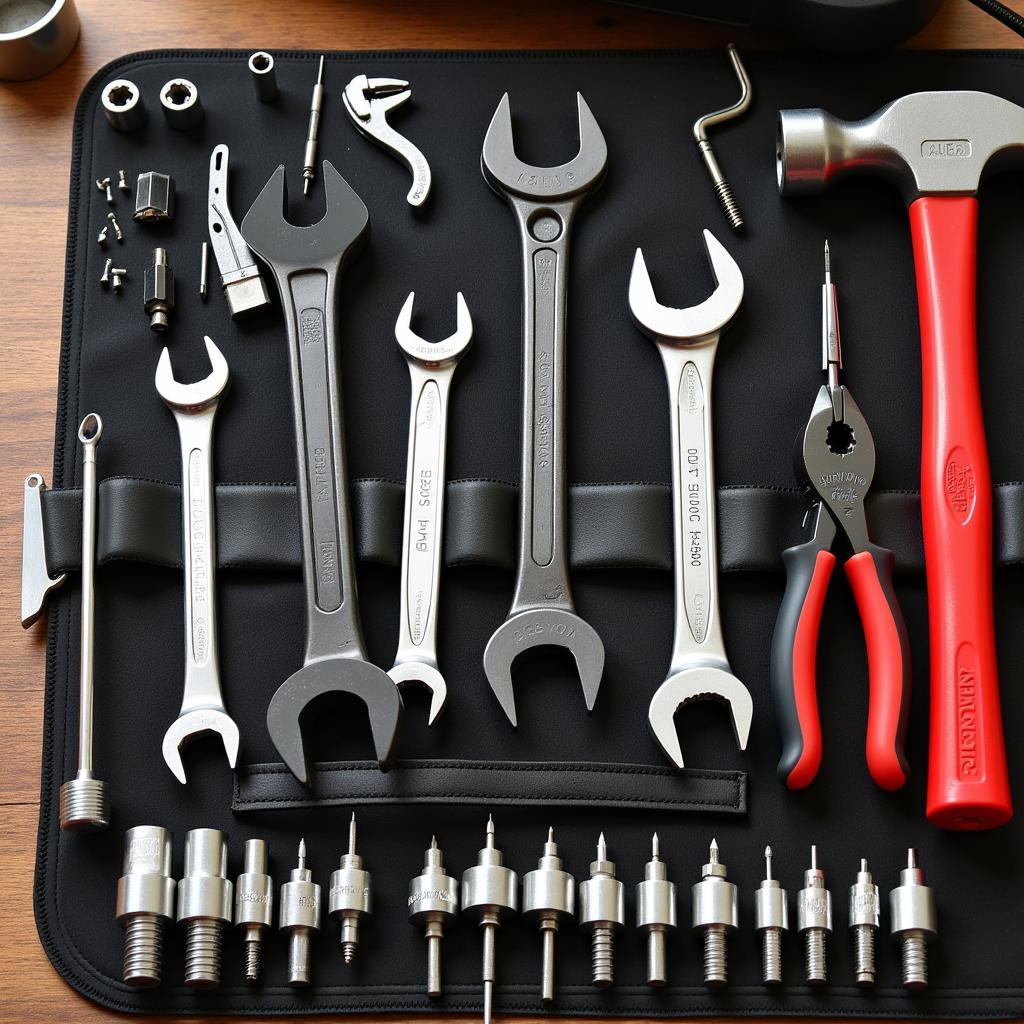Starting your car maintenance journey can feel overwhelming, especially with the vast array of tools available. This guide focuses on the must-have tools for young adults beginning to work on cars, providing a solid foundation for tackling basic repairs and maintenance. We’ll cover everything from simple hand tools to more specialized diagnostic equipment, empowering you to confidently take on DIY car projects.
Basic Hand Tools: Your First Line of Defense
Every aspiring mechanic needs a core set of hand tools. These are your everyday workhorses, essential for countless tasks.
- Wrenches: A combination wrench set, including both open-end and box-end wrenches in metric and standard sizes, is crucial. These are used for loosening and tightening nuts and bolts.
- Screwdrivers: Invest in a quality set of Phillips and flathead screwdrivers in various sizes. You’ll use these for removing screws and fasteners.
- Pliers: A set of slip-joint pliers, needle-nose pliers, and locking pliers (also known as Vise-Grips) will cover most gripping and cutting needs.
- Socket Set: A socket set with a ratchet handle and extensions allows you to quickly loosen and tighten nuts and bolts in tight spaces. Choose a set with both metric and standard sockets.
- Hammer: A basic claw hammer is useful for tapping parts into place or removing stubborn components.
 Essential Hand Tools Kit for Beginner Mechanics
Essential Hand Tools Kit for Beginner Mechanics
Stepping Up Your Game: Intermediate Tools
Once you’re comfortable with basic hand tools, consider adding these to your collection to expand your repair capabilities.
- Torque Wrench: A torque wrench allows you to tighten bolts to specific specifications, crucial for critical components like engine parts and suspension components.
- Jack and Jack Stands: Safely lifting your vehicle is paramount. A sturdy jack and a pair of jack stands are non-negotiable for any work done under the car. Never work under a car supported only by a jack.
- Multimeter: A multimeter measures voltage, current, and resistance, allowing you to diagnose electrical problems.
- Code Reader: A code reader plugs into your car’s OBD-II port and reads diagnostic trouble codes (DTCs), helping you pinpoint the source of engine problems.
 Essential Intermediate Tools for DIY Car Maintenance
Essential Intermediate Tools for DIY Car Maintenance
Diagnostic Tools: Unlocking Your Car’s Secrets
Diagnostic tools are essential for troubleshooting and understanding your car’s systems. Here are a few essential tools for young adults beginning to work on cars:
- OBD-II Scanner: A more advanced version of a code reader, an OBD-II scanner can provide live data streams, allowing you to monitor sensor readings and diagnose issues in real-time.
- Vacuum Gauge: A vacuum gauge measures engine vacuum, providing insights into engine health and performance.
What is the most important tool for a beginner?
A basic set of hand tools is the most important starting point.
Do I need a code reader?
A code reader is highly recommended, even for beginners. It can save you time and money by helping you identify problems quickly.
Expert Insights
“Starting with quality hand tools is key. Don’t skimp on the essentials,” advises veteran mechanic, Michael Davis. “A good set will last you a lifetime.”
“Learning to use a multimeter is a game-changer,” adds automotive engineer, Sarah Chen. “It empowers you to diagnose electrical issues, which can be incredibly frustrating without the right tools.”
Conclusion: Equipping Yourself for Success
Investing in the right tools for young adults beginning to work on cars is an investment in your skills and confidence. With the right tools at your disposal, you can confidently tackle basic repairs, save money on labor costs, and gain a deeper understanding of how your car works. Remember safety is always paramount, so always consult reliable resources and follow proper procedures when working on your vehicle.
FAQ
-
What type of wrench set should I buy? A combination wrench set with both metric and standard sizes is recommended.
-
Is a torque wrench necessary for beginners? While not strictly essential for beginners, a torque wrench is a valuable tool for preventing damage to critical components.
-
What is the difference between a code reader and an OBD-II scanner? An OBD-II scanner provides more advanced functionality, such as live data streams.
-
Where can I learn more about using these tools? Numerous online resources, including YouTube tutorials and automotive forums, offer valuable guidance.
-
What safety precautions should I take when working on my car? Always use jack stands when working under a car, wear safety glasses, and disconnect the battery before working on electrical components.
-
How do I choose the right size sockets for my car? Consult your car’s repair manual or online resources to determine the correct socket sizes for specific applications.
-
What is the best way to organize my tools? A toolbox or tool chest with designated compartments will help you keep your tools organized and easily accessible.
If you need further assistance, don’t hesitate to contact us via WhatsApp: +1(641)206-8880, Email: [email protected] or visit us at 910 Cedar Lane, Chicago, IL 60605, USA. Our 24/7 customer support team is ready to help.

Leave a Reply